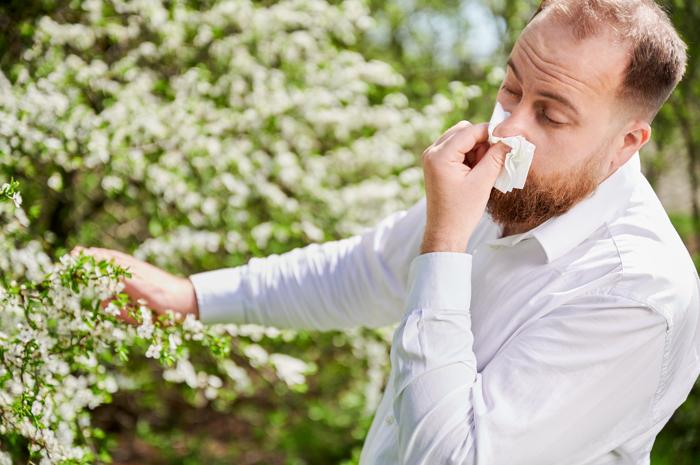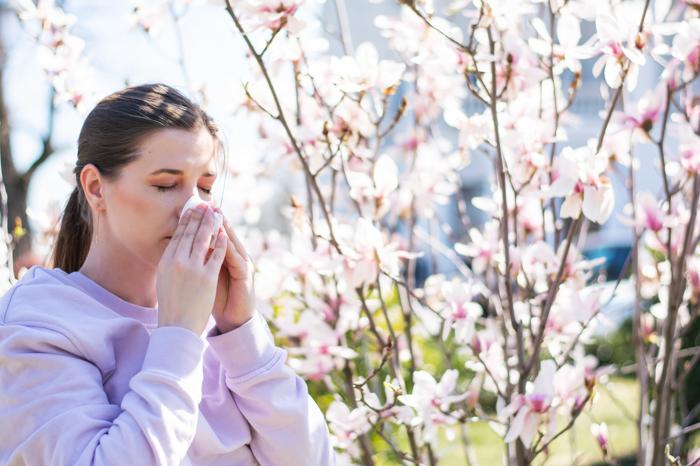When it comes to April, the complaints of spring allergy began. Pollen released by flowers, trees, grass and grass; When it reaches the nose, eye and respiratory tract, the immune system perceives them as “harmful” and reacts to an allergic response. Spring allergy is usually mixed with asthma symptoms. So, what’s the difference of the two?
Merve Kantarcı Çulha made statements to Child Immunology and Allergy Diseases Specialist. Dr. Hikmet Tekin Nacaroğlu answered questions about spring allergy.
“As a result of the studies, the allergy is not only in the nose but also in many patients affect the lungs.” Nacaroğlu said, individuals with spring allergy should be followed closely in terms of the risk of developing asthma.
What are the spring allergies and how does our body affect?
The most common cause of spring allergies is pollen. More than 150 pollen allergens varying according to the region and season have been identified. Although it varies according to the pollen season, duration and intensity, allergy findings of patients with pollen allergy are known to increase during the spring periods. Studies between asthma patients have clearly shown that pollen causes exacerbations in children’s asthma symptoms in children. 14 In a metaanalysis where studies were evaluated, the increase in 10 grass pollen in each cubic meter increased asthma-related emergency service applications and the highest relationship was determined in children aged 5-17 years.

What are the situations that increase the severity of spring allergy?
The weather may affect the severity and time of spring allergies. Weather and climate change constantly affect spring allergy and asthma. Climate change increases allergy complaints by increasing the production of pollen and mold sports and allergen content. Increased temperatures and increased amount of carbon dioxide in the atmosphere cause prolongation during the pollen seasons and an increase in the allergenicity of pollen and probably. In addition, thunderstorms break the pollen and cut into smaller pieces by increasing asthma attacks. It has been reported that all these increases are generally in the spring seasons and that the amount of high pollen in sudden changes in the air such as wind rate, heat and moisture can trigger asthma exacerbations.

Is there a risk of developing asthma over time in individuals with spring allergies?
In people with spring allergy, the likelihood of developing asthma is higher than those who are not allergic. As a result of the studies, it is known that allergy is not only in the nose but also affects the lungs in many patients. This is called the only airline is the only disease. Therefore, individuals with spring allergies should be followed closely in terms of the risk of developing asthma.
Can food allergy findings be observed in people with spring allergy?
Individuals with spring allergies may have a clinical finding development called oral allergy syndrome over the years. This is due to the fact that after eating allergen food, it contains a common protein structure between fresh fruit and pollen. In people with pollen allergy as a finding, itching and swelling occurs in the mouth and throat after receiving similar protein foods. Although the findings are mild, sometimes complaints may appear as allergic shock -like serious situations.
How can we distinguish between spring allergy findings from diseases such as colds?
Spring allergies often come with frequent sneezing, nasal congestion, nasal itching, watering in the eyes, itching in the eyes and palates. In addition, the clear nose discharge suggests that complaints are caused by spring allergy. In diseases such as colds, discharge is usually yellow-green. Findings such as light fever and sore throat indicates colds. Sometimes it is not possible to distinguish allergic flu with colds. In this case, an allergy specialist may need to be evaluated.

How can we detect pollen that causes spring allergy?
In order to find allergens that cause spring allergy, the test is to be performed firstly. Skin test is fast and reliable tests. It is a test that can be performed at any age in a short time that does not cause pain or pain to the patient. Usually made on the inside of the arm. The liquid test material containing allergen is dripped into the skin. After the test is applied, 10-15 minutes are waited and the sensitivity status is evaluated according to the skin responses obtained. In order for the tests to give correct results, it is necessary to apply with the appropriate technique and the correct allergens and for this, it is necessary to contact allergies.
How can it be protected from pollen?
As with all allergic diseases, the first thing to get rid of spring allergy is to avoid allergic factors. However, it is not possible to avoid the allergic substance in pollen allergy.
Grass and meadow pollen spread to distances of a few hundred meters, while tree pollen, such as birch, can reach distances from miles away with winds.
Therefore, although it is not possible to fully protect external environmental pollen allergens, it can turn off the doors and windows, use effective air filters, clean surfaces frequently and stay in the home during the seasons of high pollen and mold.
Especially in the morning, when the pollen is most intense, it can be avoided to ventilate your home.
Due to the increase in warm, dry, sunny days and early mornings in the morning, the number of pollen should be staying as little as possible in open areas, especially during the hours when the amount of pollen is high.
It may be preferable to stay outdoors in the evening, especially after the sun sets, where the amount of pollen is less.
The use of hats and sunglasses on the way out, showering after returning home has been shown to contribute to reducing allergen density.
Which drugs are used in the treatment of spring allergy?
The first thing we need to do in the treatment of spring allergy is to protect against allergens that cause complaints. In addition, it consists of drug therapy and allergy vaccine treatments to control complaints. Allergen is the first step of treatment and we need to take precautions against this disease in every moment of our lives. Allergen immunotherapy (vaccine therapy) is more successful and effective in children and can also reduce the risk of developing asthma in children.
Spring Allergy Symptoms
Nasal discharge or blockage
Sneezing crises
Itching, irrigation, redness in the eyes
Itching in the throat
Cough
Headache or a feeling of fullness in sinuses
Weakness, fatigue





